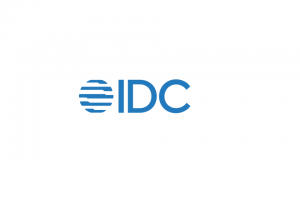 Retail telecoms revenue in Sub-Saharan Africa will grow at a compound annual growth rate (CAGR) of 10{e1f18614b95d3cd6e4b3128e1cd15d99b042a60a5a19c19b7a8e07e7495efa10} during 2010–2016, according to a new report from telecoms research and consulting company Analysys Mason (www.analysysmason.com).
Retail telecoms revenue in Sub-Saharan Africa will grow at a compound annual growth rate (CAGR) of 10{e1f18614b95d3cd6e4b3128e1cd15d99b042a60a5a19c19b7a8e07e7495efa10} during 2010–2016, according to a new report from telecoms research and consulting company Analysys Mason (www.analysysmason.com).
The Sub-Saharan Africa telecoms market: trends and forecasts 2011-2016 predicts that revenue will grow from USD40 billion in 2010 to USD69 billion in 2016. Mobile voice services will account for most of the revenue growth – retail revenue for such services is expected to grow at a CAGR of 9{e1f18614b95d3cd6e4b3128e1cd15d99b042a60a5a19c19b7a8e07e7495efa10}.
However, mobile voice revenue streams will be under continual pressure because of sustained, strong competition and the expansion of networks into more-rural and price-sensitive regions. 3G penetration will increase from 3{e1f18614b95d3cd6e4b3128e1cd15d99b042a60a5a19c19b7a8e07e7495efa10} of the population in 2010 to 20{e1f18614b95d3cd6e4b3128e1cd15d99b042a60a5a19c19b7a8e07e7495efa10} in 2016 as a result of improved network quality and availability. 4G will have a limited impact in Kenya and South Africa, but only at the end of the forecast period.
“With the exception of South Africa, telecoms markets in the region are more heavily dominated by mobile voice services than markets elsewhere in the world,” explained Roz Roseboro, co-author of the report and Lead Analyst of Analysys Mason’s The Middle East and Africa regional research programme. “This trend will continue. Fixed voice retail revenue will decline at a CAGR of –6{e1f18614b95d3cd6e4b3128e1cd15d99b042a60a5a19c19b7a8e07e7495efa10} and the number of connections will remain largely unchanged.”
The report also predicts mobile and fixed broadband to generate only 8{e1f18614b95d3cd6e4b3128e1cd15d99b042a60a5a19c19b7a8e07e7495efa10} of retail revenue in 2016. The number of broadband connections in Sub-Saharan Africa will increase from 9 million in 2010 to 50 million in 2016, but this represents an overall penetration rate of only 5{e1f18614b95d3cd6e4b3128e1cd15d99b042a60a5a19c19b7a8e07e7495efa10} of the population, mainly because of the lack of PCs in use across the region.
The fixed markets in most countries of Sub-Saharan Africa are dominated by national incumbent operators, which are rarely challenged to improve their services. However, CDMA-based limited-mobility fixed–wireless services are a threat to PSTN-based voice services in some markets.
As well as providing historical and forecast data for the region, the report offers a wide range of key implications for the industry:
mobile operators will need to provide services in secondary cities to increase subscribers
mobile operators will need to focus on retaining their high-value customers
improved network availability and quality will drive increased usage of services
fixed voice services will not be a significant driver of operator revenue.
“The good news is that operators in Sub-Saharan Africa are operating in an environment where there is a lot of growth potential,” Roseboro explains. “The challenge is employing the right strategic mix of technological innovation, geographical expansion and consumer offerings to maximise the opportunity.”
Along with figures and forecasts for the region as a whole, the report includes data for the following individual countries: Ghana, Kenya, Nigeria, South Africa, Sudan, Tanzania and Uganda.
The report is available for purchase and a summary is available; for more information contact research@analysysmason.com.
Link to The Sub-Saharan Africa telecoms market: trends and forecasts 2011-2016 report: http://www.analysysmason.com/Research/Content/Reports/RDRK0_SSA_forecast_Feb2012/
Link to press release: http://www.analysysmason.com/About-Us/News/Press-releases1/Telecoms-revenue-Sub-Saharan-Africa-Feb2012/
May 20, 2025











